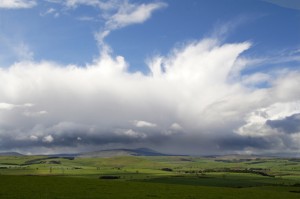 Attractions and Places of Interest
Attractions and Places of Interest
Locally, walking and cycling are right on your doorstep and Allendale is only 3 miles away where you can find public houses and hotels that serve food, shops, tea room, golf and horse riding. There is also fishing at nearby Langley dam.
Alston
9 miles south west can be is Alston, Englands highest market town, as well as being the start of the South Tyne Railway. Here you will find a variety of shops, public houses and hotels that serve food. Nenthead Mines herritage centre is only a short drive south east of Alston.
Hexham
12 miles north east you will find Hexham which is the largest town in West Northumberland situated on the A69 main Newcastle to Carlisle road 20 miles west of Newcastle standing on the banks of the river Tyne. It is a very ancient ecclesiastical parish in its own right. The Benedictine Abbey and church, was begun by Wilfrid Bishop of York in 674. After being destroyed by the Danes. It was re-founded in 1113 as a monastery for Augustinian Canons.
Lake District
On the doorstep of the Lake District are hidden treasures of timeless scenery, fascinating attractions and undiscovered villages, all waiting to be explored. Potter around interesting craft workshops and historic sites, or replenish yourself in one of the many inviting tearooms, pubs and inns that abound. Or if the mood takes you just sit back, relax and soak up the atmosphere.
Durham
With a rich heritage, the city can be traced back a thousand years to the arrival of a religious community seeking a permanent resting place for the body of St Cuthbert of Lindisfarne.
Durham is a compact city yet offers a wide range of facilities. A wide range of shops and restaurants co-exist happily with the Victorian Market. Much of Durham’s shopping area is closed to traffic, making for a more relaxed atmosphere. Take time to sit in the cobbled Market Place and enjoy some of the street entertainment, particularly during July and August.
Hadrians Wall
Hadrians Wall was constructed over a period of six years by order of the Emperor Hadrian, who came to Britain in AD 122. According to one of Hadrian’s Roman biographers it was built to ‘separate the Romans from the Barbarians’ a feat it achieved for over 250 years. Today, the area between South Shields and Ravenglass is studded with forts, milecastles, temples and turrets. These 2000 year-old remains are brought brilliantly to life by museums, reconstructions and fascinating visitor centres, all with something different and all waiting to be discovered.
Newcastle
A great city and once in the forefront of 19th century industrial innovation, now the forefront of technical innovation, leisure and culture.
Wander down to the transformed waterfront, the Quayside, now lined with stylish hotels, designer bars, restaurants and public art. The Gateshead Millennium Bridge, a work of art in itself, arches across the Tyne to link the City to Gateshead Quays and the Baltic Centre for Contemporary Art.
Gateshead
A vibrant, modern and lively place, with a history dating back 2,000 years. In Gateshead there is so much to do, there are many attractions, museums and galleries, and events and festivals all year long. You can also enjoy some excellent shopping, top-class restaurants and amazing nightlife. To top it all off, NewcastleGateshead is surrounded by some of the most beautiful countryside, parks and gardens, historic castles and coastal scenery in the UK.
Alnwick Castle & Gardens
Alnwick Castle is the second largest inhabited Castle in England, the first being Windsor Castle, and has been the home of the Percys, Earls and Dukes of Northumberland since 1309. The earliest mention of Alnwick Castle in the history books appears soon after 1096 when Yves de Vescy became baron of Alnwick and erected the earliest parts of the Castle.
The Castle was first restored by the 1st Lord Percy of Alnwick in the early 1300’s and portions of this restoration remain today, including the Abbot’s Tower, the Middle Gateway and the Constable’s Tower.
Wallington Hall
Wallington is a square-set, grey-stone, eighteenth century house, sitting on top of the remains of an earlier castle, perhaps Norman in origin. Dating from 1688, the house was home to many generations of the Blackett and Trevelyan families, who all left their mark. The surroundings offer walks through a variety of lawns, shrubberies, lakes and woodland, enlivened with buildings, sculpture, water features and a wildlife hide. The beautiful walled garden has varied collections of plants and an abundant conservatory. Longer estate walks encompass wooded valleys and high moorland.
Cragside
The revolutionary home of Lord Armstrong, Victorian inventor and landscape genius, was a wonder of its age. Built on a rocky crag high above the Debdon Burn, Cragside is crammed with ingenious gadgets and was the first house in the world lit by hydroelectricity. Even the variety and scale of Cragside’s gardens are incredible. Surrounding the house on all sides is one of the largest ‘hand-made’ rock gardens in Europe. In the Pinetum below, England’s tallest Douglas Fir soars above other woodland giants. Across the valley, the Orchard House still produces many varieties of fresh fruit. Today Armstrong’s amazing creation can be explored on foot or by car and provides one of the last shelters for the endangered red squirrel. The lakeside walks, adventure play area and labyrinth all appeal especially to families.




